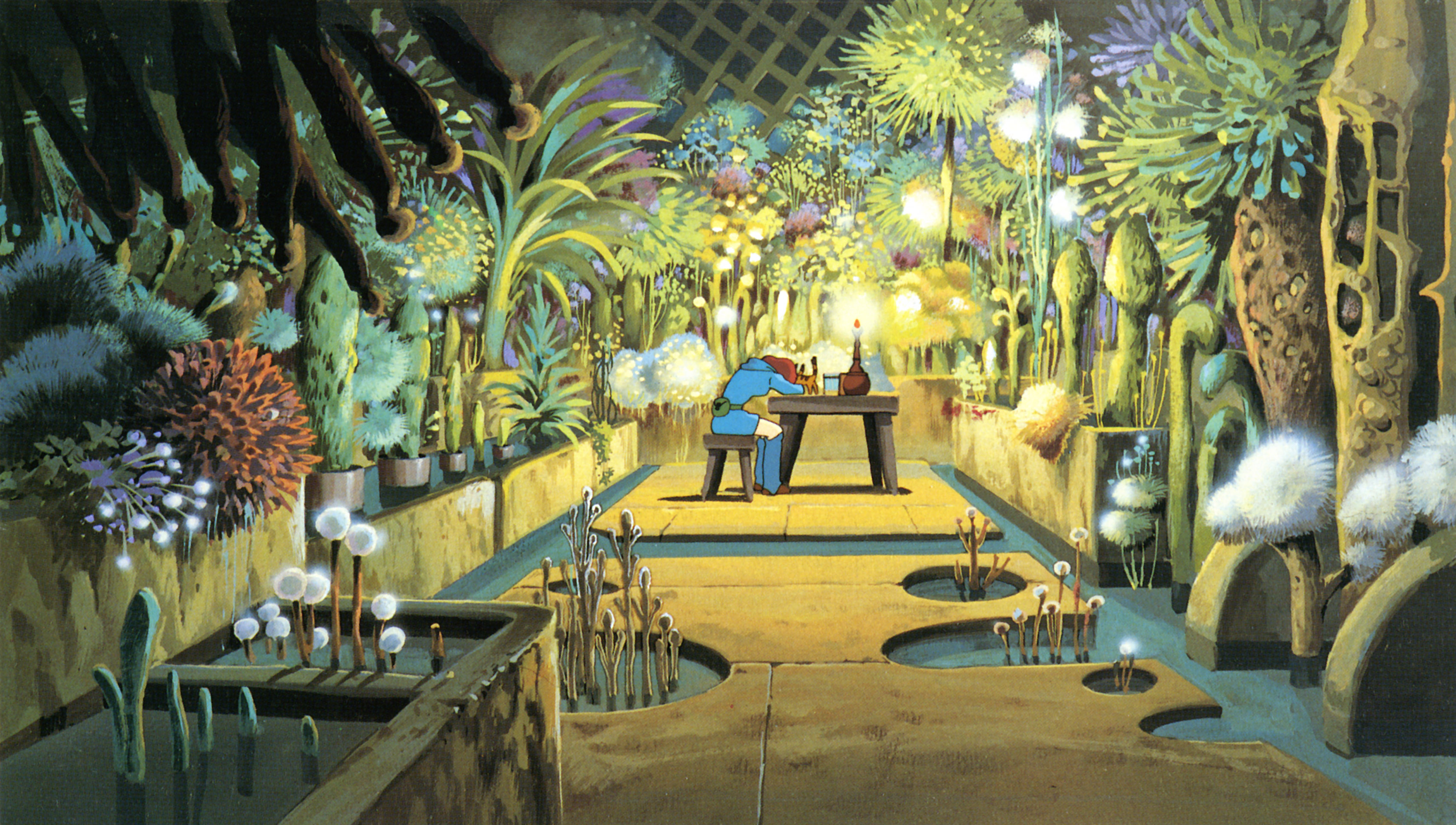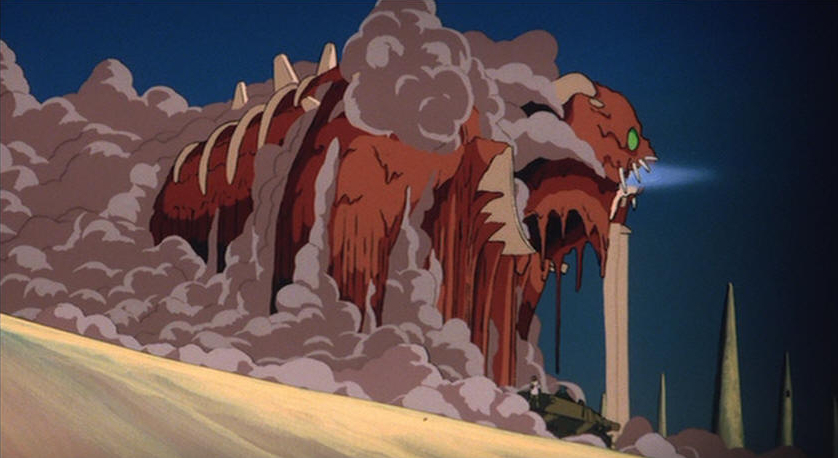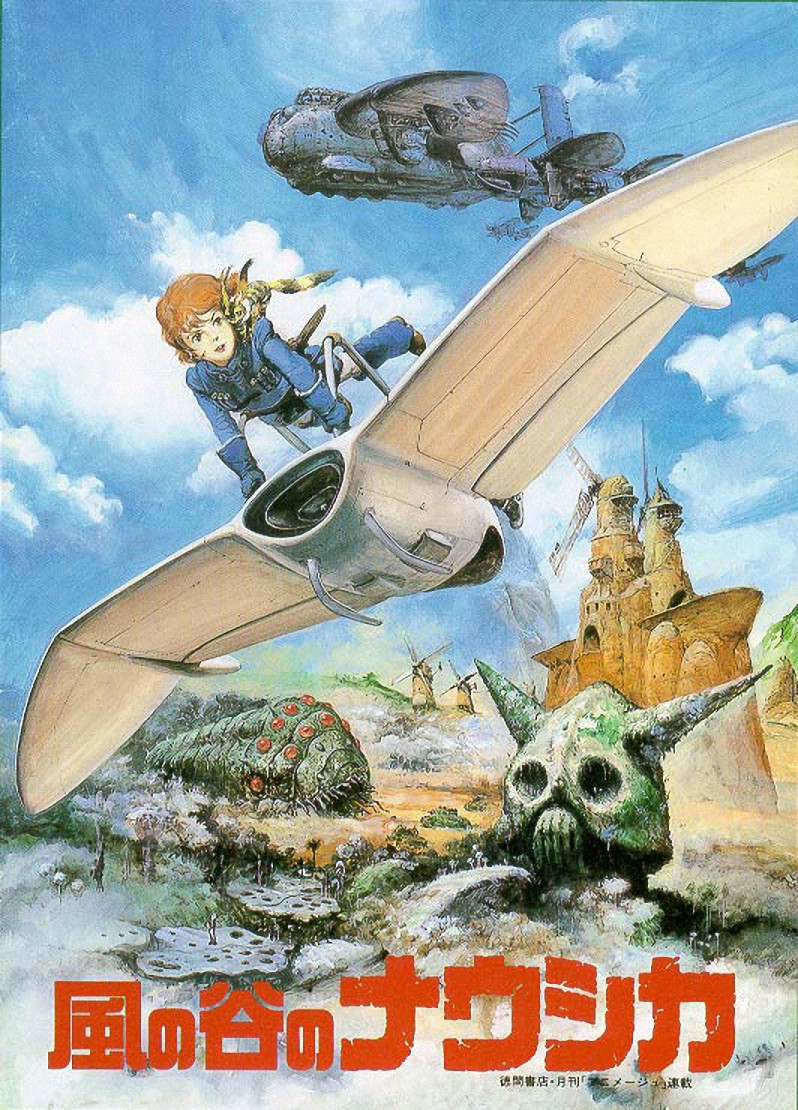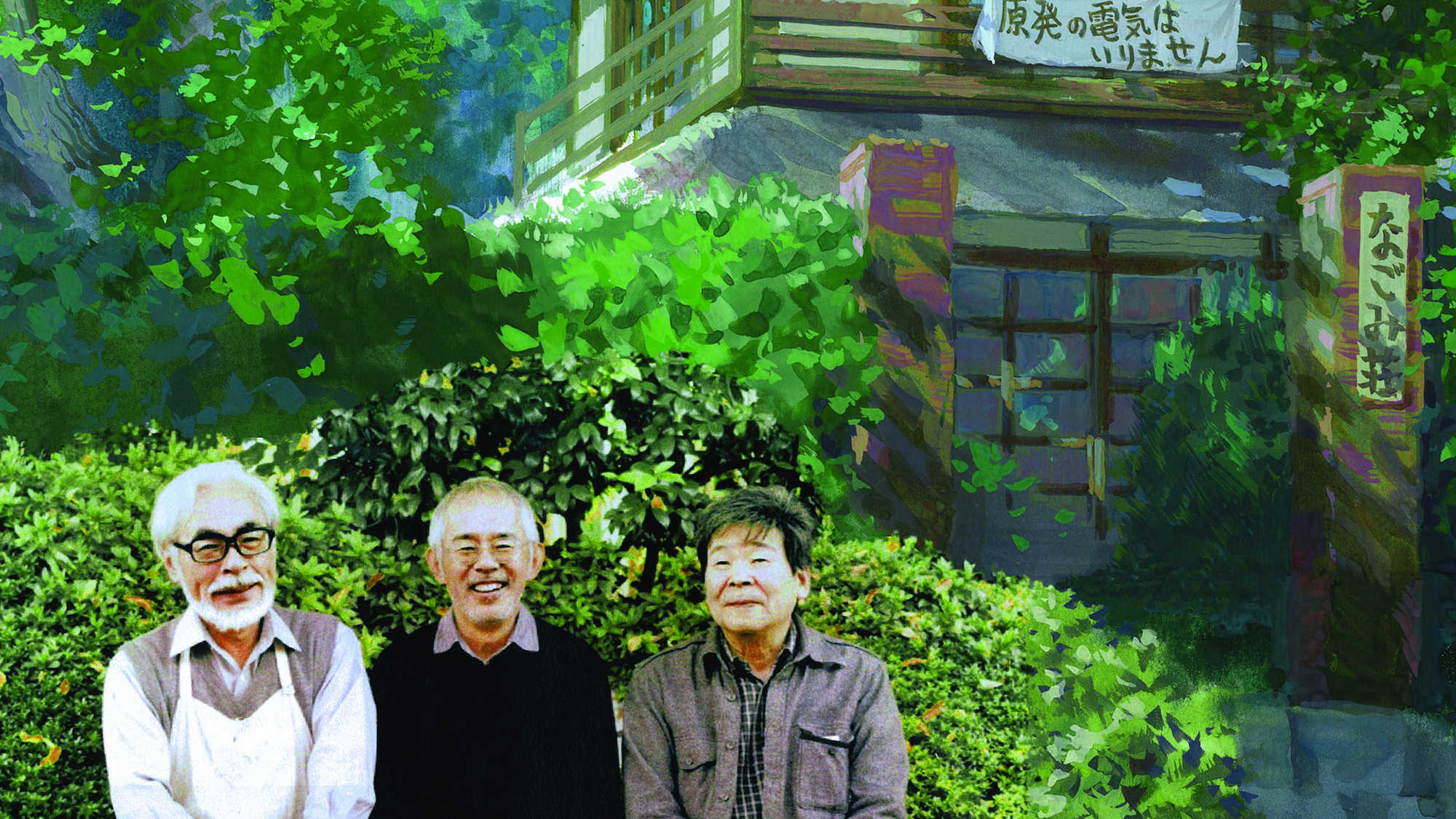The one that started it all and birthed an animation studio. Nausicaä of the Vally of the Wind is probably one of the most important and beloved anime films of all time. Before we get to that though, there is a lot of pre-history to get out of the way.
Nausicaä of the Valley of the Wind is often seen as the beginning of Studio Ghibli. After all, the film's massive financial success in Japan allowed Miyazaki, Isao Takahata and Toshio Suzuki to establish the studio. However, in an odd kind of way, it was the culmination of the first part of their careers. Miyazaki and Takahata had long careers in animation prior to Nausicaä, both in film and TV.
The two first worked together on Takahata's film debut, The Great Adventure of Hols, Prince of the Sun (oddly retitled to The Little Norse Prince for its Western release), released back in 1968. Right from the beginning, Takahata and his staff had a clear vision for the film and were trying to achieve a higher quality of animation than had ever been attempted before. However, this meant that the film overran its budget and production schedule. Due to a rush to get the film out, the creators had to let some sequences go, leaving them unanimated and simply scrolled over the frame to create a sense of movement. To make matters worse, the film ended up bombing at the box-office. However, despite the limitations of the matching their ambition, Hols is a massively important film and still holds up today (when you understand the fraught production) despite very much being very much a film of its day.
 |
| Hols is a massively important that still holds up today |
The story follows a young protagonist named Hols, who goes on an epic quest to avenge his homeland from the evil ice demon Grunwald. Takahata based the plot on a puppet play named The Sun Above Chikisani, which in itself is a reinterpretation of an ancient epic poem from the indigenous people of Hokkaido (Japan's most northern main island). However, being made just two decades after World War Two, the studio in charge of Hols begged Takahata to change the setting as, at the time, it was frowned upon for anime films to be set in Japan. Thus it was changed to a Scandanavian setting. Despite the change in setting, Takahata was still able to explore the themes he wanted to. Despite being a fantasy adventure film for all ages, Hols is actually very politically charged, reflecting the changing societal and political landscape of contemporary Japan and the rise of socialism amongst its youth. This is imbedded into the film's narrative to speak to the adult audience.
Despite the film's failure at the box-office, Takahata was viewed in the Japanese animation world as the paragon, greatly inspiring the young Miyazaki. With Hols, Takahata reached a new level of sophistication in Japanese animation, with its highly kinetic style of animation, dark and psychological content, the political and social implications and its complex visuals. While not a box-office success, Hols pretty much instantly found a fandom and inspired a generation of animators.
Miyazaki and Takahata would work together again, on and off again over the course of the next decade or so, mostly on TV, with shows such as Heidi, Girl of the Alps. Miyazaki found his own success with the creation of his own show, Future Boy Conan. The two would also end up working together on adapting the popular Lupin the Third manga. This familiarity with the characters of that series led Miyazaki to direct the second feature length Lupin film, The Castle of Cagliostro. The film actually represents a big tonal shift from the source material, with the titular master thief more sensitive than the lechrous character of the manga. Many of the hallmarks of Miyazaki's later career are present here - extreme attention to detail, the style of direction and the colour pallete. Released in 1979, Cagliostro is an incredibly fun film, with some gorgeous animation (in particular the early car chase sequence) and serves as an interesting re-interpretation of the Lupin character, if you have any familiarity with the manga (think Robert Altman/Elliot Gould's take on Marlow in The Long Goodbye). Even if you haven't read the manga (like me), the film offers so much more outside of a curio watch. The characters are fun and the art design is simply breath-taking, exploring a Japanese style name akogare no Paris, meaning 'Paris of our dreams' - that it to say, a Japanese interpretation of European art styles. The architecture and landscape of the film are simply breath-taking, with some stunning background work. From early on in his career, Miyazaki was interested in fusing the art of different cultures together to create unique, yet oddly familiar, worlds and this would be a cornerstone of his career.
The film was a mild box-office disappointment but gained critical praise and enough good will to start Miyazaki considering his next project. Cagliostro would go on to gain some very famous fans, including Steven Spielberg, who is rumoured to have been inspired by the film and its action scenes for Indiana Jones and The Adventures of Tintin. Many of Disney's most popular creators were greatly inspired by the film - direct references to sequences are in The Great Mouse Detective (this might be my one chance to say this - see the film - it's a cute underrated kid's film...) and Atlantis. The film's biggest supporter, however, is John Lasseter, aka one of the founders of Pixar, director of Toy Story 1 and 2 and the current creative leader behind Disney's Second Renaissance.
 |
| The Castle of Cagliostro is a breezy and supremely well made action film |
With enough good will built up from Cagliostro, Miyazaki began pondering his next step. This is where the third figure in Studio Ghibli's history would come in - Toshio Suzuki. Suzuki, editor of the popular Animage magazine, reached out to Miyazaki, offering a chance for him to direct for Animage's publisher Tokuma Shoten. Miyazaki pitched a concept and story that would become Nausicaä of the Valley of the Wind. The idea was rejected but Suzuki offered an alternative idea - publish the concept as a manga series, which Miyazaki would write and draw, to generate interest in a film adaptation. At first he was unreceptive, however Miyazaki eventually agreed upon the condition that he had to direct. Beginning in February 1982, Nausicaä soon became Animage's most popular series. The creation of Nausicaä would again draw upon various different cultures and works. Miyazaki was greatly inspired by Ursula Le Guin's Earthsea fantasy series (one of Miyazaki's original pitches for his debut film, he tried making an adaptation of the books for decades before finally seeing the light of day in 2006's Tales from Earthsea, as directed by his son Goro ... more on that one later), The Lord of the Rings and Isaac Asimov's Nightfall. There has also been suggestions that the story was also inspired by the Japanese folk tale The Princess Who Loved Insects. The naming of the main character Nausicaä was based on the character of the same name from Homer's The Odyssey, with certain aspects of that character's personality inbued into her. The final building block was a real life event of the mercury poisoning of Minamata Bay and how nature respond and thrived due to the situation. With its rich artwork and wealth of inspiration, it wasn't long before the film adaptation was green lit.
 |
| The manga of Nausicaä , created in order make the film, is a work of art in its own right |
This finally brings us to the film adaptation of Nausicaä of the Valley of the Wind, released in 1984 to rapturous applause and box-office success.
Nausicaä is an epic, post-apocalyptic science fiction story set in a world ravished by the effects of rampant human pollution. Set a 1000 years after the catastrophic events of the Seven Days of Fire, in which the world was destroyed by Giant Warriors (representative of human's hubris), a mysterious infection has spread across the world known as the Sea of Decay, creating wide-spread deserts and poisonous forests, where insects have mutated to monstrous sizes. The most intimidating are the Ohmus, massive mysterious beings who flit between blind rage and calm sedation. With only a few pockets of human civilisation left, it is a bleak world. However, into this steps Nausicaä and the valley of the wind. Nausicaä is the princess of this realm, which is protected from the poisons by the winds from the sea that lift up through the valley. However, she harbours a fascination with the Sea of Decay, the insects and how screwed the world really is. She lives a peaceful existence until a ship crashes into the valley, harbouring insects and spores that soon begin to infect the realm. This leads to a political situation, as an aggressive force known as the Tolmekian Empire invade the valley and forceably take over. Nausicaä is taken as a hostage and soon learns that the Tolmekians, headed by the ambitious Kushana, intend to revive one of the Giant Warriors to create a final solution to the Sea of Decay and the Ohmu problem (A-bomb, anyone?). Nausicaä must race to save her homeland from further destruction.
 |
| Nausicaä offers a well-intentioned science fiction epic that only suffers from being an early work from Miyazaki |
What holds up after all these years is Nausicaä's ambition and Miyazaki's incredibly well-intentioned vision. The setting and lore building are absolutely phenomenal. Speaking as someone with a passing knowledge of the manga (having only read the first couple of volumes), the film is incredibly effective at building up this hugely complex, terrifying and oddly beautiful vision of the future. The whole aesthetic of the film, from the Sea of Decay to the costume design to the ships and weapons, were all clearly meticulously planned out. The film never really breaches into the realm of preaching to its audience. Rather, it just lets the story and setting tell itself. It would have been very easy for Nausicaä to go on a huge speech about the wrongs of humanity but instead it's more to do with overcoming and dealing with an extreme situation. The political stance of the film is how the warring ideologies of different nations ultimately mask the true issues that humanity must overcome in order to progress.
Then there's the animation. You're going to hear this a lot over the course of these articles but the animation is absolutely incredible, in particular on the creatures. Clear time and care were taken to bring a real sense of weight and movement. The best is probably Nausicaä flying past an airborne giant centipede. The graceful lines and planned movements bring an other-worldly yet oddly functional look. The character designs and animation are equally good though, with real care given to subtle scenes. A scene I love sees Nausicaä befriending a fox-squirrel. It seems rabid and angry, it bites Nausicaä's finger and she just calmly waits for it to stop. It's a quiet scene but one that shows the film's ethos to its storytelling style and extremely subtle animation. The background work as well deserve massive applause. Everything is rendered in extreme detail, with stand outs being Nausicaä's secret 'green house' room and any scene set in the poisonous forest. All this contributes to a great sense of atmosphere, especially during the opening moments of the film, as Nausicaä is scavenger hunting. The low-key soundtrack, the sparse use of sound effects, the wonderful colour design and amazing art work give the location an eerie, scary and beautiful look. Another sequence I love is a flashback (or a dream, maybe) to when Nausicaä was a child and tried to protect a baby Ohmu from being killed by her father. The colour is pulled back to a golden tinge, the animation style is a lot sketchier and seems to be moving in slow motion (a hard thing to do in hard drawn animation without it looking weird). It's a perfect representation of what a memory feels like from long ago; that and couple with the amazing music, you have a gorgeously melancholic scene. Finally, the last standout scene is the resurrection of the Giant Warrior in act, as brought to life by future anime god Hideaki Anno (aka the creator of Neon Genesis Evangelion, one of my favourite TV shows). Watching this globular mess come to life and reek havoc is truly a sight to behold.
 |
| Nausicaä's ambition, art-style, characters and animation make it bona-fide classic |
The film has this amazing atmosphere, which is particularly bolstered by the soundtrack by Joe Hisaishi, in his first collaboration with Miyazaki, who would go onto score all of his films. For my money, this is the best director-composer partnership in film - ever. Hisaishi worked as an ambient composer before working with Miyazaki and that same ethos can be felt with this film. There's wonderful moments of ambient bliss as Nausicaä tries to communicate with the Ohmus. It just lends a greater sense of weight to the scene. However, when the soundtrack needs to be epic, Hisaishi knows how to pull them heart strings. One of the things Ghibli does best is sheer moments of joy, whether they be small or epic things. And one of the biggest comes at the end of Nausicaä. It's a beautiful sequence. Nausicaä has sacrificed herself in order to return a baby Ohmu to the rampaging herd. Seeing her sacrifice, she is lifted up by the creatures, as the mournful score kicks in (it always really gets me), and brought back from the brink of death. The villagers look in first in horror which then gives way to pure joy as the legend past down from generation to generation comes true in front of their eyes. It's a great moment, which gives way to a powerful piece of music. However, the stand out musical piece is probably the simple piano ballad that is played over the opening credits. The sequence hints at the events that transpired to create the world we are viewing. The music embodies this almost ancient and deeply sad feeling that helps to set the tone for the rest of the film.
The main characters are all well rounded, if a little basic. Miyazaki would continue to play with these character types over the course of his films and improve upon them, so as a starting point, the film does a good job. If I have one slight criticism of the film, it's that the characters, while all distinct, are not given enough time to breath in the narrative. Now this is probably down to the fact that this is just the first two volumes of the manga - I imagine all the characters have more time to shine in the manga. Nausicaä is incredibly likeable - her personality is clear, her motives are at the forefront of everything she does and is not entirely perfect. I've heard people call Nausicaä a Mary Sue before, which I think is a little unfair but I can see where these criticisms come from. I think it's more to do with the way the villagers evangelise her so much. Because in the story, she is not perfect - she gives into pure rage and is terrified by her actions. The rest of the film is really atoning for her actions in the first act. The other standout is Kushiana, the military leader of the Tolmekians. Overly ambitious with a will to survive, she just takes things one step too far. While this character type was improved upon in Mononoke with Lady Eboshi (one of that film's best characters), Kushana is highly memorable. Lord Kupa is also great, a badass sword-wielding Gandalf type with a very mysterious backstory. Who is this guy? Where did he come from? What's his story? These are the questions I'm hoping are (and at the same time aren't) answered in the manga).
The only slight downer is the rushed conclusion of the film. Obviously, the story continues in the manga but if you don't have a knowledge of this it might come across as abrupt. From an emotional arc, the film's story is complete but part of me would love to have seen the film adaptations continue. The flip side though, is that it might have robbed audiences of the other wonderful worlds that Miyazaki would go onto create.
 |
| Nausicaä became a hot-bed for young, talented animators, including future Evangelion creator, Hideaki Anno |
Nausicaä was one of the first 'Ghibli' films I watched when I started to get into the studio and it still holds up today, maybe even slightly better than I remember it being. While I do think the themes and story were better suited in Princess Mononoke (clearly the work of a more mature filmmaker), Nausicaä has plenty to recommend. I think it's more the ambition of the film that I respond to. The world is absolutely amazing and the characters, while a bit basic, are well-rounded and memorable. Nausiccä was the first step and for the work a filmmaker dealing with his own original work for the first time, it's a stellar job. There's enough flavour, atmosphere, emotion and jaw-dropping scenes to completely recommend Nausicaä.
Nausicaä would continue to be the project that followed Miyazaki for years. After all, there was a serialised manga to complete! Those who were left a little unsatisfied at the end of the film will be happy to know that the story does continue in the manga. As mentioned, the film is based on the first two volumes of the manga and Miyazaki ended up drawing and writing another five volumes in between films and other projects, before finally finishing the series in 1994. At the time of writing, I have not read the complete manga series but hope to do so soon, so I can't comment just yet on how the series expands upon where the first two volumes/film leaves off. From what I have read however, I can say that Miyazaki's same attention to detail is as present here as it is in his films, if not more so. With more time to construct each frame, the Nausicaä manga is one of the most richly detailed I have ever come across.
With the success of Nausicaä, Miyzaki, Takahata and Suzuki had enough clout to form their own animation studio and the first one out of the gate was Castle in the Sky.








